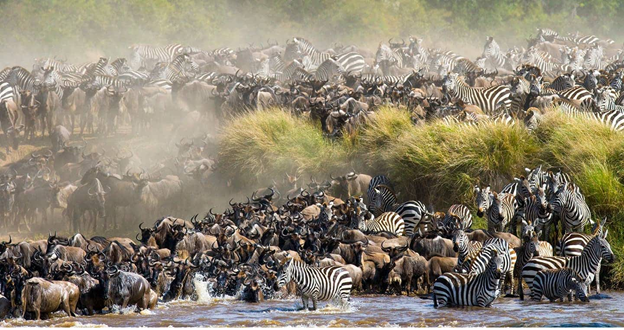
Wildebeest Migration Safari
Wildebeest Migration Safari in Kenya and Tanzania, unveils the world’s greatest wildlife movement that takes place in Kenya and Tanzania. The annual wildebeest migration in Kenya and Tanzania is an awe-inspiring natural phenomenon that attracts nature enthusiasts from around the world. This incredible journey of millions of wildebeests, zebras, and other wildlife is an unparalleled spectacle of survival, strength, and instinct. In this essay, we will explore the captivating sights and remarkable animal species encountered during the wildebeest migration, where to witness them, and the best time to plan your safari adventure.
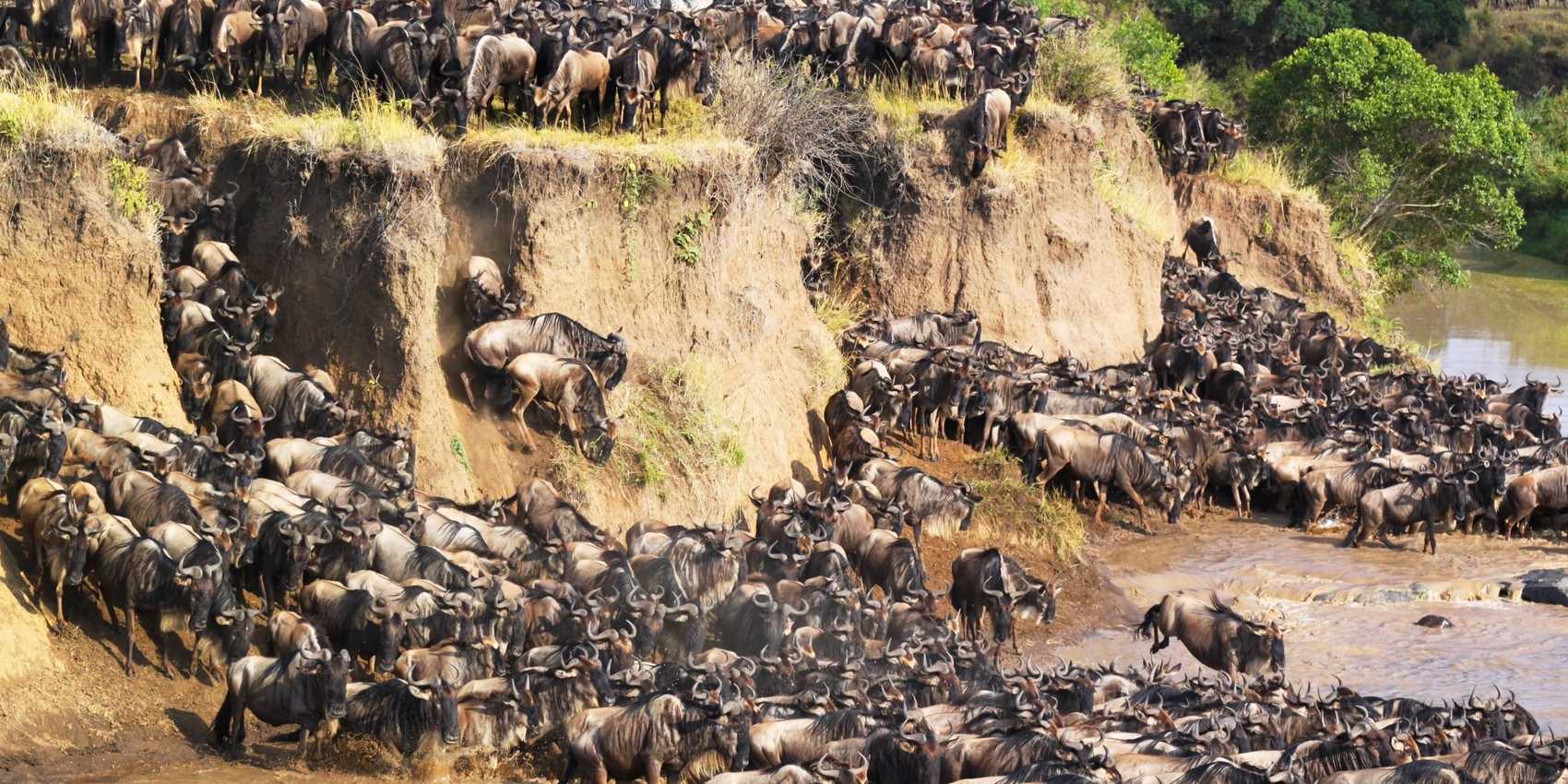
The Great Wildebeest Migration, “A Natural Wonder”.
The Wildebeest Migration is a cyclic movement of over 1.5 million wildebeests, accompanied by thousands of zebras, gazelles, and other herbivores. They travel across the Serengeti Plains in Tanzania and the Maasai Mara National Reserve in Kenya. This epic journey is driven by the quest for fresh grazing lands and water sources, as the animals follow the rainfall patterns and the growth of nutritious grass. Covering an area of over 25,000 sq-kilometers, witness this spectacle relentless force of nature and the interconnectedness of ecosystems. The migration unfolds throughout the year, with various stages offering unique opportunities for observation and exploration.
What to see during wildebeest migration safari in Kenya and Tanzania
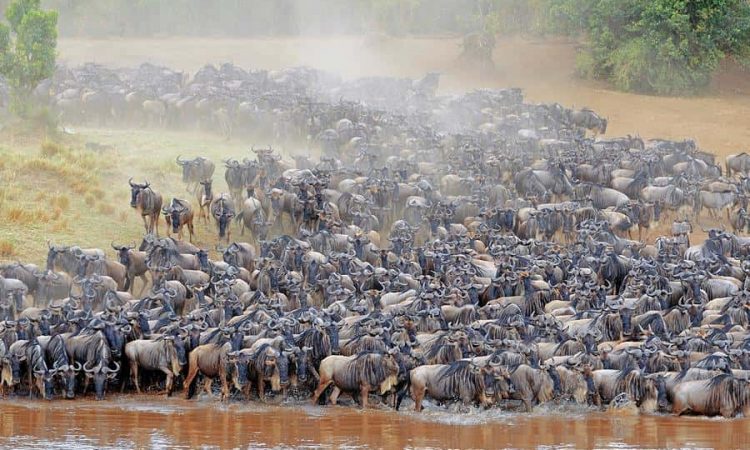
Animal Species Encountered during the Migration “Wildebeest Migration Safari”
- Wildebeests: These resilient creatures are the primary participants in the migration, known for their distinct appearance with a sturdy build, curved horns, and a bearded chin. Witnessing the massive wildebeest herds is an unforgettable experience.
- Zebras: Traveling alongside the wildebeests, zebras contribute to the migration’s vast numbers. Their striking black and white stripes provide a beautiful contrast against the grassy plains.
- Thomson’s Gazelles: These small, agile antelopes are often seen sprinting alongside the wildebeests and zebras, joining the migration in search of safety in numbers.
- Grant’s Gazelles: Another species of gazelles frequently encountered during the migration, Grant’s gazelles showcase elegance with their slender bodies and impressive speed.
- Topi: With their reddish-brown coats and short, curved horns, topis add diversity to the wildlife spectacle. They are known for their unique leaping displays, particularly during the mating season.
- Giraffes: Although not active participants in the migration, giraffes can be seen browsing on the acacia trees that dot the landscape, providing a picturesque sight.
What to see during wildebeest migration safari in Kenya and Tanzania
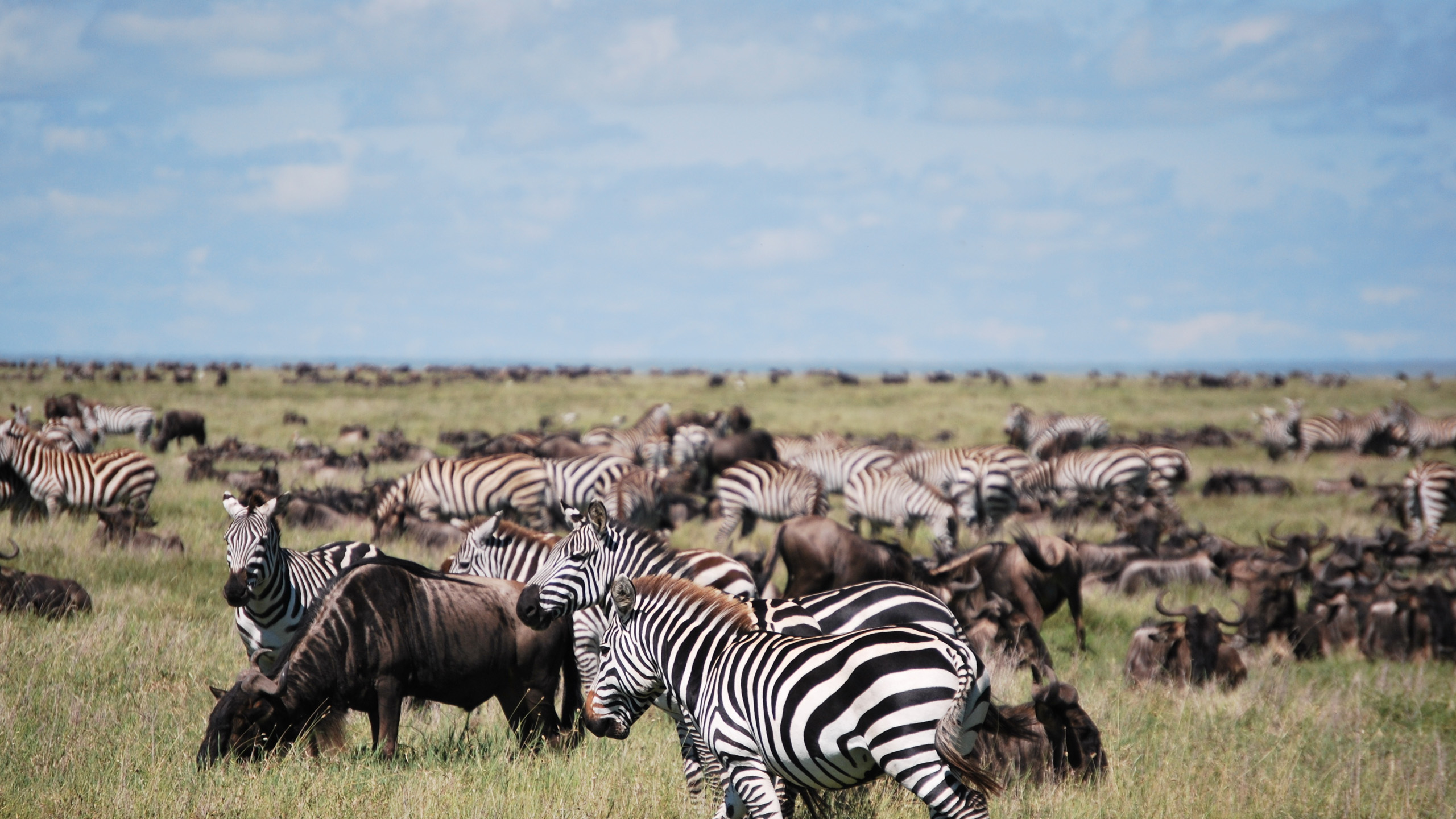
Where to Witness the Migration, “Wildebeest Migration Safari”
Best places to see the Wildebeests
Serengeti Plains, Serengeti National Park, Tanzania:
The Serengeti Plains offers some of the most iconic scenes of the migration. The herds can be found in the southern plains from December to March, where they give birth to thousands of calves. As the dry season progresses, they move towards the western corridor (April to June) and the northern Serengeti (July to October).
Its vast plains and diverse habitats provide a stunning backdrop for wildlife enthusiasts. One of the most remarkable events is the dramatic river crossings, where masses of wildebeests brave the treacherous waters infested with crocodiles. Witnessing this heart-stopping moment is an experience that will forever remain etched in your memory. Balloon safaris over the Serengeti offer a bird’s-eye view of the migration, providing an unparalleled perspective of the endless herds.
What to see during wildebeest migration safari in Kenya and Tanzania
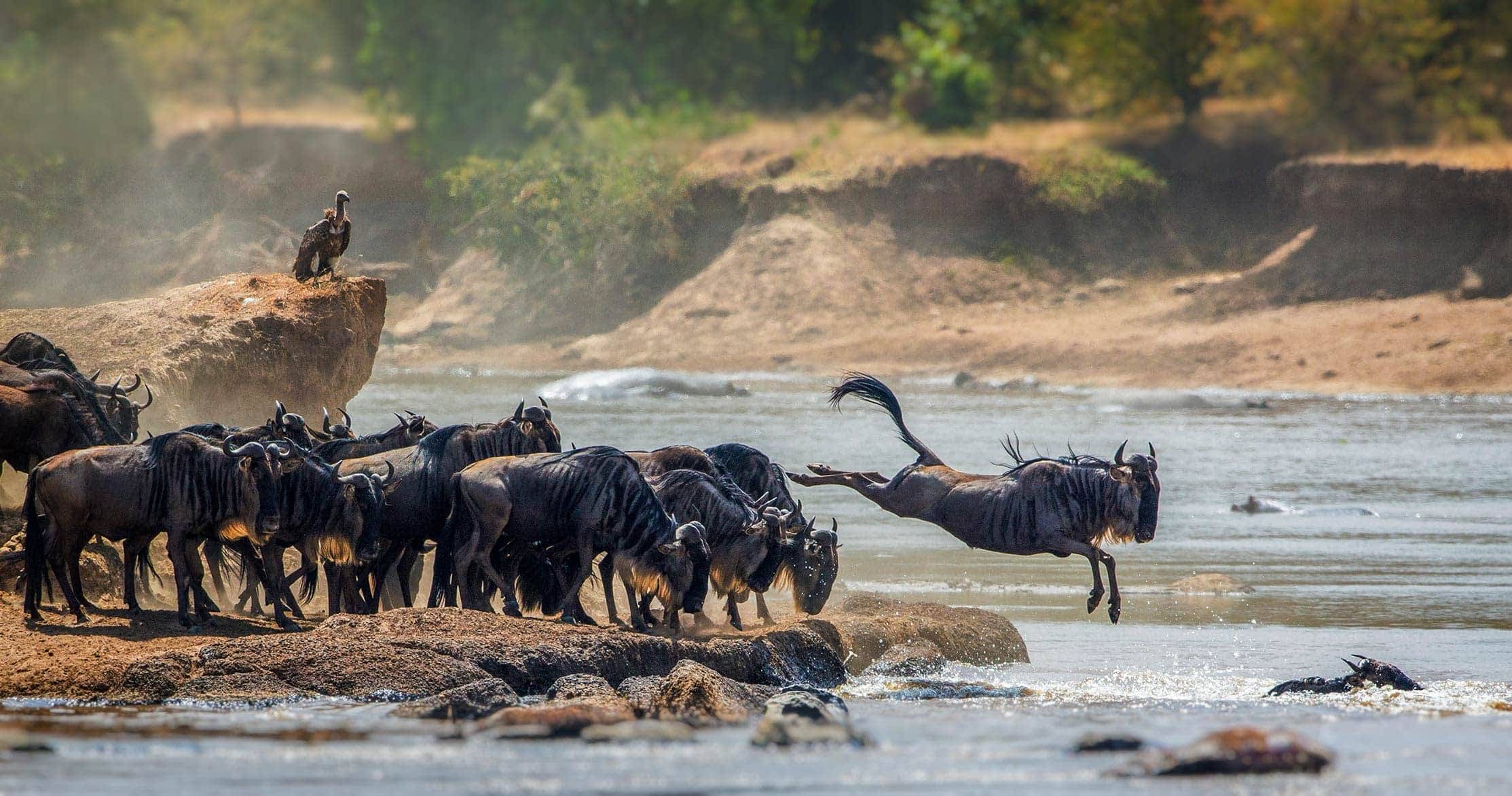
Maasai Mara National Reserve, Kenya:
Adjacent to the Serengeti lies the Maasai Mara National Reserve in Kenya, another vital destination for the wildebeest migration. The migration occurs from July to October where the wildebeests cross the treacherous Mara River, braving crocodile-infested waters. Here you get an incredible opportunity to witness dramatic river crossings.
The Mara River, cutting through the reserve, becomes a stage for countless wildebeests plunging into its depths. Accompanied by thundering hooves and the roar of predators, the river crossing is an electrifying experience. Beyond the migration, the Maasai Mara offers exceptional opportunities to witness the Big Five (elephant, lion, leopard, buffalo, and rhinoceros), as well as an array of other wildlife species. Cultural encounters with the Maasai people, known for their vibrant traditions and harmonious coexistence with wildlife, add an enriching dimension to the safari.
What to see during wildebeest migration safari in Kenya and Tanzania
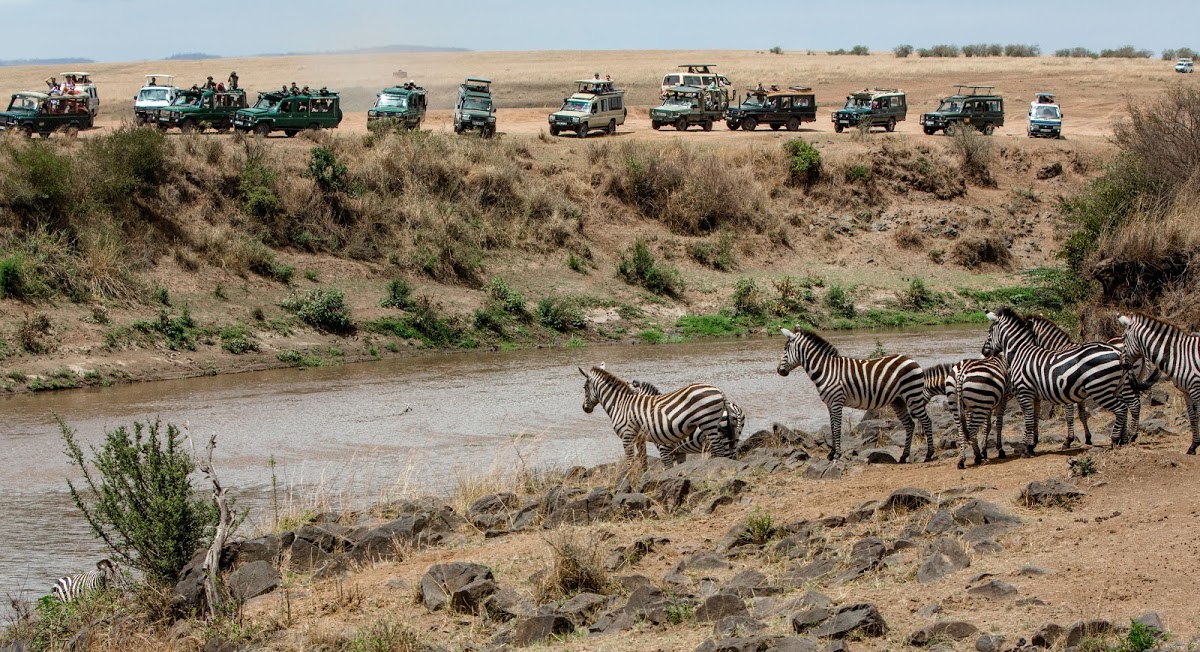
Best Time for the Wildebeest Migration Safari, “Wildebeest Migration Safari”
The wildebeest migration safari offers mesmerizing experiences throughout the year, but the timing may vary depending on the location.
- Serengeti Plains, Tanzania. To witness the wildebeest calving season, visit the southern Serengeti between December and March. For dramatic river crossings, plan your trip to the northern Serengeti between July and October.
- Maasai Mara National Reserve, Kenya. The best time to visit the Maasai Mara is between July and October, as the wildebeests cross the Mara River.
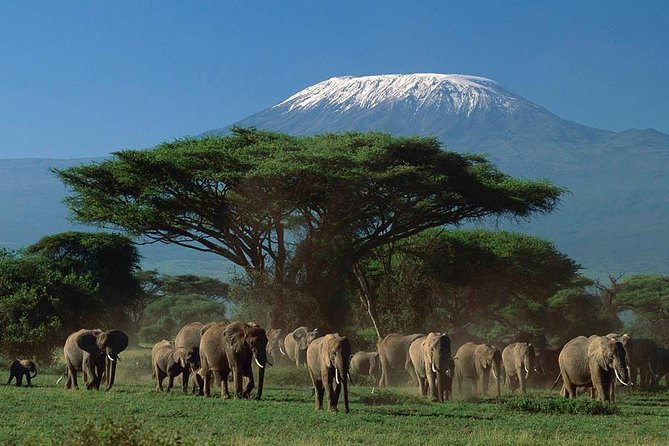
Amboseli National Park and Ngorongoro Crater
While the Serengeti and Maasai Mara take center stage during the migration, neighboring parks also contribute to the overall spectacle. Amboseli National Park in Kenya offers breathtaking views of Mount Kilimanjaro as a backdrop to the wandering herds. Witnessing elephants strolling beneath the towering peak is an iconic African image. In Tanzania, the Ngorongoro Crater presents a unique opportunity to observe the migration in a concentrated space. This UNESCO World Heritage site, often referred to as the “Garden of Eden,” hosts an extraordinary density of wildlife within its volcanic caldera, ensuring a memorable safari experience.
What to see during wildebeest migration safari in Kenya and Tanzania
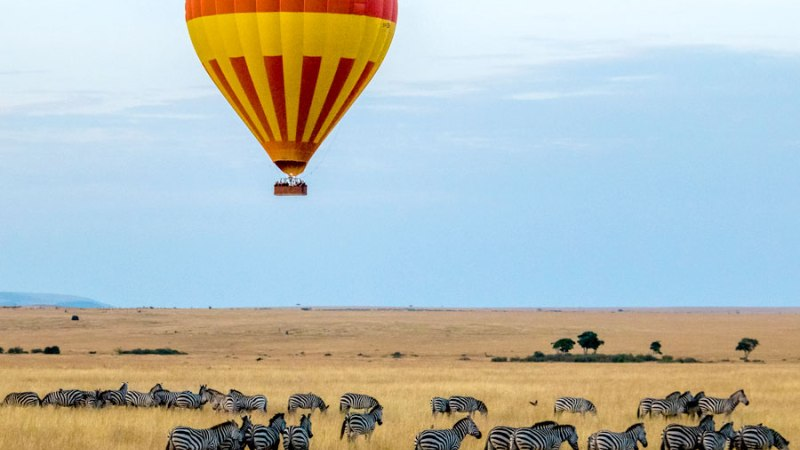
Conclusion, “Wildebeest Migration Safari”
Embarking on a wildebeest migration safari in Kenya and Tanzania is an adventure of a lifetime. From the thundering hooves of millions of animals traversing vast landscapes to the heart-stopping river crossings and the cultural richness of the Maasai people, every moment is filled with awe and wonder. The Serengeti, Maasai Mara, Amboseli, and Ngorongoro Crater provide the perfect vantage points to witness this extraordinary natural phenomenon. The wildebeest migration safari offers an immersive experience that brings you closer to the wonders of the animal kingdom, leaving an indelible mark on your soul and creating memories to cherish forever.






